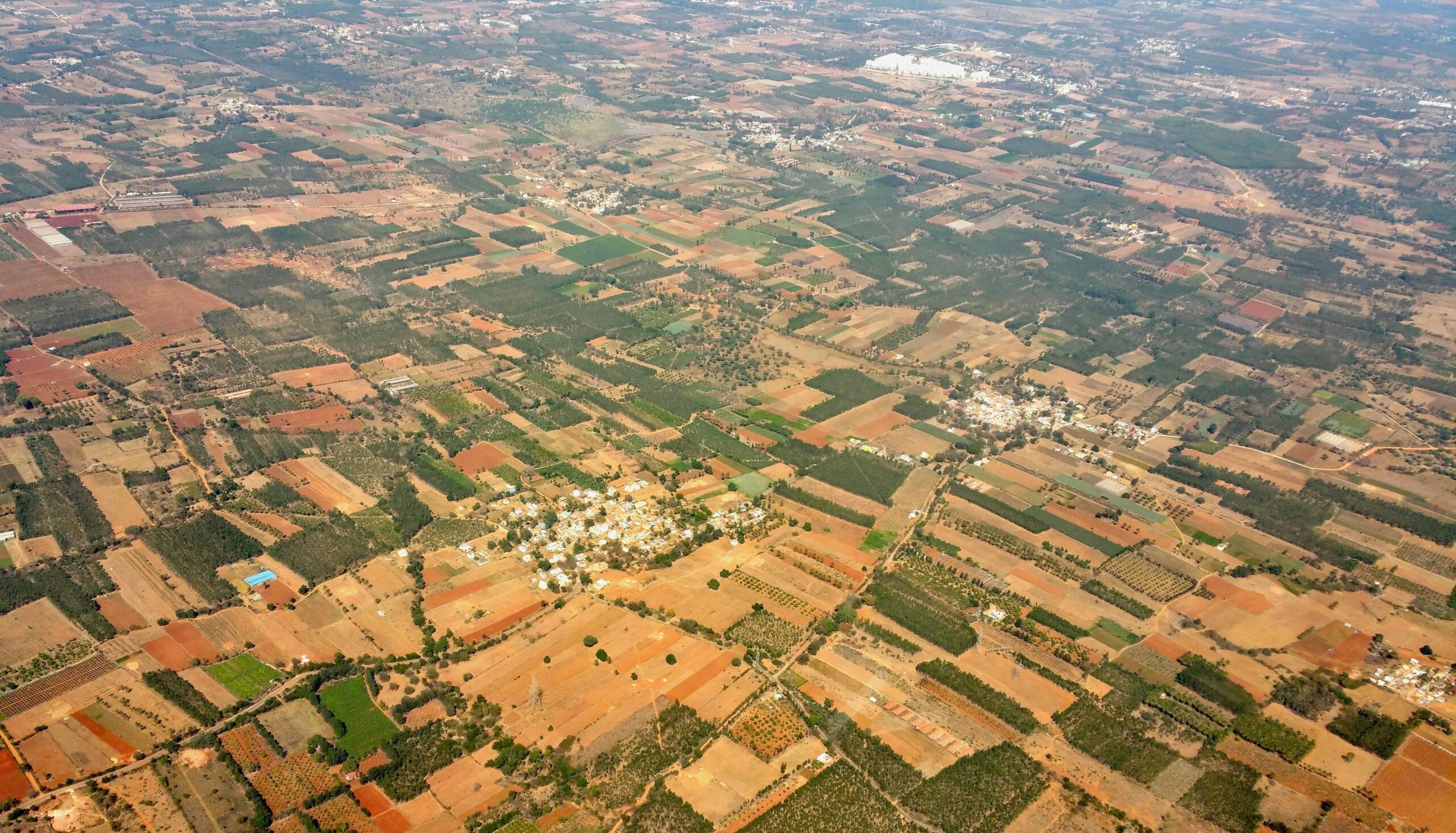Rural development plays a crucial role in fostering sustainable growth and creating opportunities for communities residing in remote areas. With a focus on improving the quality of life, enhancing infrastructure, and promoting economic stability, this article delves into the various aspects of rural development. From exploring innovative strategies to highlighting success stories, join us on a journey to unravel the transformative potential of rural development and its significance in building resilient societies.
Understanding the Importance of Rural Development
Rural development entails the implementation of various initiatives and policies aimed at improving the living conditions and economic prospects of rural communities. It recognizes the unique challenges faced by these areas, such as limited access to essential services, inadequate infrastructure, and a lack of economic opportunities. By addressing these issues, rural development endeavors to bridge the urban-rural gap while fostering sustainable growth.
Promoting Economic Stability
A key objective of rural development is to promote economic stability within rural areas. This involves supporting local industries, encouraging entrepreneurship, and creating job opportunities that align with the region’s specific needs and resources. By diversifying the economy and reducing dependency on agriculture alone, rural communities can achieve long-term economic growth and resilience.
Enhancing Infrastructure
Developing robust infrastructure is vital for the overall progress of rural areas. This includes improving transportation networks, ensuring access to clean water and sanitation facilities, expanding energy grids, and enhancing connectivity through digital infrastructure. By investing in infrastructure development, rural communities can overcome geographical barriers and gain access to essential services, education, healthcare, and markets.
Improving Quality of Life
Rural development aims to improve the quality of life for individuals residing in rural areas. This involves providing access to basic amenities such as healthcare, education, and clean energy. Additionally, it focuses on promoting social inclusion, ensuring gender equality, and empowering marginalized communities. By addressing these factors, rural development contributes to creating vibrant and inclusive societies.
Preserving the Environment
Rural development also recognizes the importance of protecting the environment and natural resources. By promoting sustainable agricultural practices, land management techniques, and renewable energy sources, it aims to strike a balance between economic development and environmental conservation. This sustainable approach not only preserves the ecosystem but also ensures the long-term viability of rural communities.
Driving Regional Development
Rural development plays a pivotal role in driving overall regional development. By strengthening rural areas, it creates a ripple effect that positively impacts surrounding urban centers. This can lead to balanced regional development, reduced urban migration, and a more equitable distribution of resources and opportunities.
Strategies for Effective Rural Development
Effective rural development requires the implementation of well-thought-out strategies that address the unique challenges faced by rural communities. Here are some key strategies that have proven to be effective:
1. Enhancing Access to Education and Healthcare
Improving access to quality education and healthcare services is essential for the development of rural communities. This can be achieved by establishing schools and healthcare facilities in remote areas, providing scholarships and incentives to attract qualified professionals, and leveraging technology to bridge the gap between urban and rural areas.
2. Encouraging Agricultural Innovation
Agriculture is a vital sector in rural areas, and promoting innovation in this field can significantly boost rural development. This can be done by introducing modern farming techniques, promoting sustainable agricultural practices, providing farmers with access to credit and markets, and supporting agricultural research and development.
3. Fostering Entrepreneurship and Small Business Development
Encouraging entrepreneurship and supporting the growth of small businesses can create employment opportunities and stimulate economic growth in rural areas. This can be achieved by offering training and mentorship programs, providing access to financial resources and market information, and creating a supportive ecosystem for startups and small enterprises.
4. Developing Rural Infrastructure
Investing in rural infrastructure is crucial for unlocking the potential of rural areas. This includes improving road networks, expanding access to electricity and clean water, establishing broadband connectivity, and developing marketplaces and storage facilities. These infrastructure developments enhance connectivity, attract investments, and improve the overall quality of life in rural communities.
5. Strengthening Local Governance and Community Participation
Empowering local governance structures and fostering community participation are essential for sustainable rural development. This can be achieved by promoting participatory decision-making processes, strengthening local institutions, encouraging civic engagement, and ensuring transparency and accountability in resource allocation and project implementation.
6. Encouraging Public-Private Partnerships
Collaboration between the public and private sectors can significantly accelerate rural development efforts. Public-private partnerships can bring together the expertise, resources, and innovation required to address the multifaceted challenges faced by rural areas. These partnerships can facilitate investments, knowledge transfer, and the implementation of impactful projects.
By adopting these strategies, policymakers, organizations, and communities can work together to drive sustainable rural development and create prosperous and resilient rural communities.
Success Stories in Rural Development
Across the globe, numerous successful initiatives have demonstrated the transformative power of rural development. Here are a few inspiring success stories:
1. Self-Help Groups Empowering Women in India
In India, the formation of self-help groups (SHGs) has been instrumental in empowering women and driving rural development. These groups provide financial assistance, training, and a platform for women to engage in income-generating activities. This has not only enhanced their socio-economic status but also contributed to community development through initiatives like micro-enterprises, education programs, and healthcare campaigns.
2. Community-Based Tourism in Costa Rica
Costa Rica’s community-based tourism initiatives have successfully revitalized rural areas, especially in ecologically rich regions. By empowering local communities to manage and benefit from tourism activities, these initiatives have created alternative livelihoods, preserved natural resources, and offered visitors an authentic cultural experience. This sustainable tourism approach has become a model for other countries seeking to promote rural development while preserving their environmental heritage.
3. Agricultural Cooperatives in Japan
Japan’s agricultural cooperatives, known as “JA,” have played a significant role in rural development. These cooperatives provide farmers with collective marketing, purchasing, and distribution services, reducing costs and increasing their bargaining power. By facilitating knowledge-sharing, technological advancements, and efficient supply chains, JA cooperatives have helped revitalize rural economies, enhance productivity, and ensure the sustainability of agriculture in Japan.
4. Rural Electrification in Bhutan
Bhutan’s successful rural electrification program has brought about transformative changes in remote areas. By extending the electrical grid to rural communities and harnessing renewable energy sources, Bhutan has improved access to modern amenities, including lighting, cooking facilities, and communication technologies. This has not only enhanced the quality of life for rural inhabitants but also created opportunities for economic growth and social development.
5. Mobile Banking in Kenya
In Kenya, mobile banking services have revolutionized rural economies, particularly through the success of M-Pesa. This innovative mobile money transfer platform has enabled financial transactions, access to credit, and savings services for individuals in remote areas. By providing a secure and convenient way to manage finances, mobile banking has empowered rural communities, reduced poverty, and facilitated economic activities.
These success stories exemplify the positive impact that targeted rural development initiatives can have on communities, economies, and the environment. By learning from these experiences, we can further refine our approaches and continue to drive positive change in rural areas around the world.
Challenges and Future Outlook for Rural Development
While rural development initiatives have made significant progress, several challenges still need to be addressed to ensure sustained and inclusive development in rural areas. Here are some of the key challenges and the future outlook for rural development:
1. Limited Access to Resources and Services
Rural communities often face limited access to essential resources and services, such as education, healthcare, clean water, and electricity. Bridging this gap requires continued investment in infrastructure development, leveraging technology for remote service delivery, and ensuring equitable distribution of resources to meet the specific needs of rural communities.
2. Poverty and Income Disparities
Rural areas are more prone to poverty and income disparities compared to urban regions. Addressing this challenge requires the promotion of income-generating activities, agricultural diversification, and the creation of employment opportunities beyond traditional farming. Social safety nets, skills development programs, and access to financial services can also play a crucial role in reducing poverty and narrowing income gaps.
3. Climate Change and Environmental Sustainability
Rural communities are often more vulnerable to the impacts of climate change, including extreme weather events, droughts, and loss of agricultural productivity. Future rural development efforts must prioritize climate resilience, sustainable land management, and the adoption of climate-smart agricultural practices. Investing in renewable energy sources and promoting environmental conservation can also contribute to long-term sustainability.
4. Digital Divide and Technological Advancements
The digital divide between urban and rural areas remains a significant challenge in today’s interconnected world. Bridging this divide requires expanding broadband connectivity, promoting digital literacy, and facilitating access to technology and e-services. Harnessing the full potential of technological advancements, such as precision agriculture and e-commerce, can unlock new opportunities for rural development.
5. Governance and Policy Implementation
Effective governance and policy implementation are critical for successful rural development. Strengthening local governance structures, enhancing transparency, and ensuring participatory decision-making processes can empower rural communities and foster ownership of development initiatives. Additionally, aligning policies across sectors, promoting coordination among stakeholders, and evaluating the impact of interventions are essential for driving sustainable rural development.
The future outlook for rural development is promising, with increasing recognition of the importance of rural areas in achieving sustainable and equitable development. By addressing these challenges and adopting innovative approaches, we can create a future where rural communities thrive, economies prosper, and the urban-rural divide diminishes.
Conclusion: Embracing the Potential of Rural Development
Rural development is a crucial aspect of building sustainable and inclusive societies. By focusing on economic stability, enhancing infrastructure, improving the quality of life, preserving the environment, and driving regional development, rural areas can unlock their full potential and contribute to overall societal progress.
Collaboration and Innovation
Addressing the challenges faced by rural communities requires collaboration among governments, organizations, and local communities. By fostering partnerships, sharing best practices, and leveraging innovative solutions, we can overcome barriers and drive impactful change in rural areas.
Empowering Rural Communities
Central to rural development is the empowerment of rural communities. By involving local residents in decision-making processes, supporting entrepreneurship and small businesses, and promoting gender equality and social inclusion, we can create an environment where rural communities can thrive and actively participate in their own development.
The Role of Technology
Technology plays a pivotal role in rural development, providing opportunities for connectivity, access to information, and the efficient delivery of essential services. By bridging the digital divide and embracing technological advancements, rural areas can leapfrog into the future and leverage digital solutions for economic growth and development.
Sustainable and Resilient Development
Sustainability and resilience are key principles in rural development. By promoting sustainable agricultural practices, renewable energy sources, and climate resilience, rural communities can adapt to changing environmental conditions and ensure the long-term viability of their economies and ecosystems.
As we move forward, it is imperative to recognize the immense potential of rural development and the need for continued investment, effective policies, and targeted interventions. By embracing the unique strengths and addressing the specific challenges faced by rural areas, we can create a future where rural communities thrive, economic opportunities abound, and sustainable development becomes a reality.
In conclusion, rural development plays a pivotal role in fostering sustainable growth, improving the quality of life, and reducing the urban-rural divide. By promoting economic stability, enhancing infrastructure, empowering communities, preserving the environment, and driving regional development, rural areas can unlock their full potential and contribute to overall societal progress. However, challenges such as limited access to resources and services, poverty, climate change, technological disparities, and effective governance need to be addressed. Through collaboration, innovation, and embracing technology, we can overcome these challenges and create a future where rural communities thrive, economies prosper, and sustainable development becomes a reality. By investing in rural development, we invest in the well-being and prosperity of our societies as a whole.

